#Sports Equipment Market
Text
The Sports Equipment Industry PESTAL Analysis
The sports equipment industry is a dynamic and evolving sector that encompasses a wide range of products, from athletic apparel to gear for various sports and activities. In this blog post, we will conduct a PESTAL analysis of the sports equipment industry, examining the political, economic, social, technological, environmental, and legal factors that influence this market.
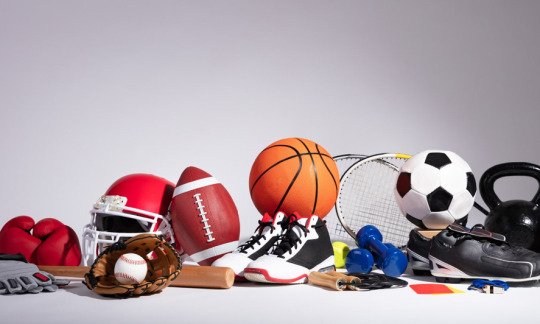
Political Factors
Political factors play a significant role in shaping the sports equipment industry, impacting areas such as regulations, trade policies, and government support for sports and fitness. Government regulations related to safety standards, import/export policies, and labor laws can affect the manufacturing and distribution of sports equipment. Additionally, hosting major international sporting events requires significant political decisions and investments in infrastructure, which can impact the industry.
Economic Factors
Economic factors have a substantial influence on the sports equipment industry, affecting consumer spending, market demand, and overall growth. The industry's economic indicators, such as market size, growth rate, and consumer spending on sports equipment, provide insights into the industry's performance. For example, the US sports equipment market was valued at $13.5 billion in 2004, with a growth rate of 13.8%. Understanding economic cycles, inflation rates, and consumer behavior is crucial for companies operating in this sector.
Social Factors
Social factors, including demographics, cultural trends, and consumer preferences, shape the demand for sports equipment. The industry's response to societal changes, such as the increasing focus on health and fitness, diversity in sports participation, and the popularity of athleisure wear, influences product development and marketing strategies. Analyzing social trends and consumer behavior helps companies align their offerings with evolving preferences and lifestyles.
Technological Factors
Technological advancements play a vital role in the sports equipment industry, driving innovation, product development, and consumer engagement. Wearable technology, such as fitness trackers and smart sports gear, has transformed the way athletes train and monitor their performance. Companies that leverage technology in product design, manufacturing processes, and marketing strategies gain a competitive edge in the market. Embracing eCommerce, digital marketing, and data analytics is essential for companies to stay relevant and meet consumer expectations.
Environmental Factors
Environmental considerations are increasingly important in the sports equipment industry, with a growing emphasis on sustainability, eco-friendly practices, and resource conservation. Companies are adopting sustainable materials, reducing waste in production processes, and promoting environmentally responsible practices to meet consumer demand for green products. Addressing environmental concerns, such as carbon footprint, waste management, and ethical sourcing, is essential for companies to demonstrate corporate social responsibility and align with changing consumer values.
Legal Factors
Legal factors, including regulations, intellectual property rights, and consumer protection laws, impact the sports equipment industry's operations, marketing, and compliance. Companies must adhere to safety standards, product labeling requirements, and advertising regulations to ensure legal compliance and consumer safety. Intellectual property protection, contract law, and anti-doping regulations are critical considerations for companies in this sector. Understanding and navigating the legal landscape is essential for companies to mitigate risks, protect their brands, and maintain ethical business practices.
Conclusion
The sports equipment industry is a multifaceted sector influenced by a complex interplay of political, economic, social, technological, environmental, and legal factors. By conducting a comprehensive PESTAL analysis, companies can gain valuable insights into the external forces shaping the industry, identify opportunities for growth, and mitigate potential risks. Embracing innovation, sustainability, and consumer-centric strategies is key for companies to thrive in the competitive sports equipment market and meet the evolving needs of athletes, fitness enthusiasts, and consumers worldwide.
#PESTAL Analysis#Sports Equipment Market#Sports Equipment Industry#Sports Equipment Market Research Report
0 notes
Photo






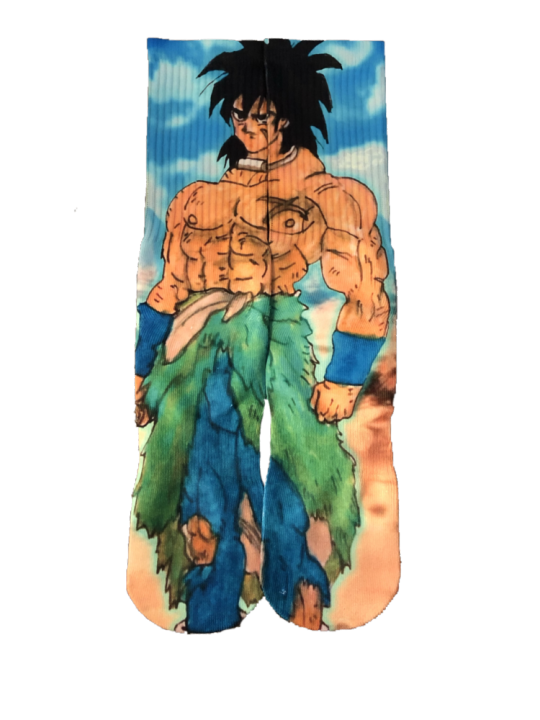

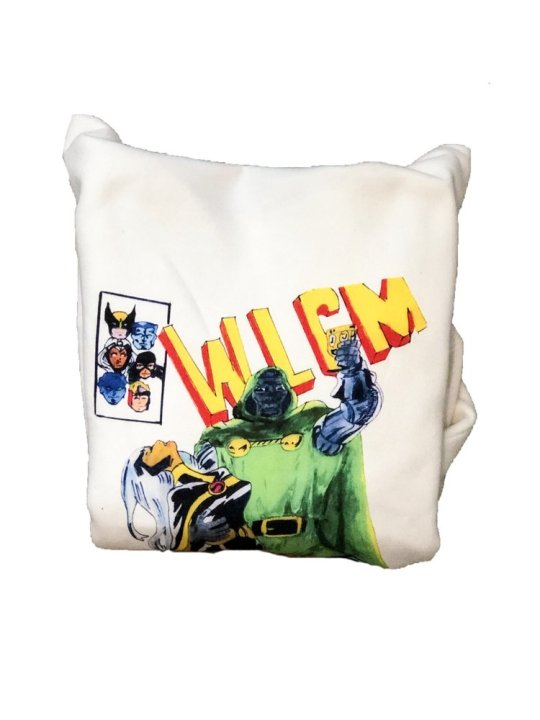
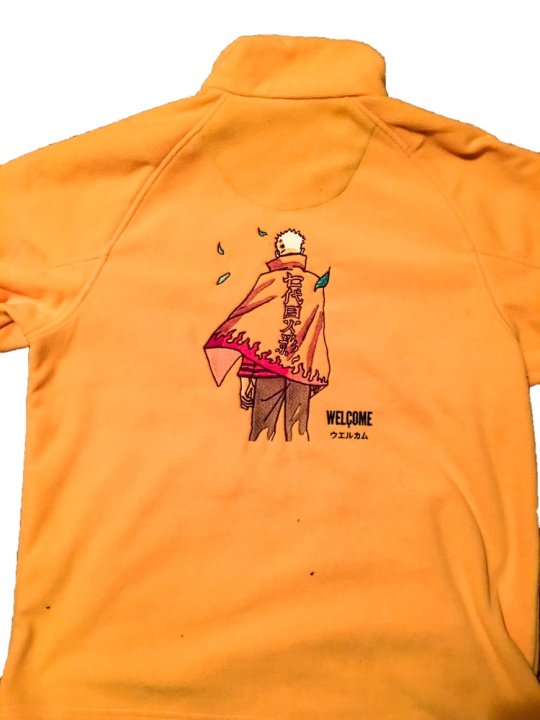
SHOP: GETTOTHECORNER.COM
#rasheed wallace#detroit#detroit pistons#eastern market#ball don't lie#hokage#lord hokage#lord seventh#naruto#uzumaki#streetwear#menswear#tom ford#land of fire#lebron james#thekidfromakron#interstate heavy equipment - akron#ohio#sports illustrated#nba#espnw#nfl#doctor doom#doom#victor von doom#storm#xmen#x-men#x-men 97#x-men: the animated series
97 notes
·
View notes
Text
The Golf Equipment Market: Asia Pacific's Dominance and Growth Prospects

Introduction
The global golf equipment market has seen substantial growth over the past decade, with the Asia Pacific region emerging as a dominant player. This surge is driven by several factors, including rising disposable incomes, increasing interest in sports and recreational activities, and significant investments in golf infrastructure.
In this article, we will explore the key drivers behind the Asia Pacific region's dominance in the golf equipment market, analyze market trends, and forecast future growth prospects.
Download Free Sample: https://www.nextmsc.com/golf-equipment-market/request-sample
The Rise of Golf in Asia Pacific
Increasing Popularity and Participation
Golf has traditionally been seen as a sport for the elite, but its appeal has broadened considerably in the Asia Pacific region. Countries such as Japan, South Korea, China, and Thailand have witnessed a growing number of golf enthusiasts. This surge is partly attributed to the increasing influence of media and international tournaments, which have popularized the sport among the younger demographic.
In China, for instance, the government has promoted golf as a means to boost tourism and develop a healthier, more active population. South Korea, known for producing world-class golfers like Inbee Park and Sung Hyun Park, has seen a substantial increase in female participation, further expanding the market.
Rising Disposable Incomes
Economic growth in the Asia Pacific region has led to higher disposable incomes, allowing more individuals to afford luxury sports like golf. This financial uplift has not only increased the number of people playing golf but also driven demand for high-quality golf equipment. Golfers are willing to invest in premium clubs, balls, apparel, and accessories, contributing significantly to market growth.
Inquire Before Buying: https://www.nextmsc.com/golf-equipment-market/inquire-before-buying
Infrastructure Development
The development of golf courses and related infrastructure has played a pivotal role in the market's expansion. Countries like Japan and China have invested heavily in building world-class golf courses, resorts, and training facilities. These investments have made golf more accessible to a broader audience and have also attracted international tourists, further boosting the market.
Market Trends and Innovations
Technological Advancements
Technological innovation is a key driver of growth in the golf equipment market. Manufacturers are continually developing advanced products to enhance the playing experience.
For instance, the integration of artificial intelligence (AI) and machine learning in golf clubs and balls has led to products that offer improved accuracy and performance. Smart golf clubs equipped with sensors can analyze a player's swing and provide real-time feedback, helping golfers improve their skills.
Sustainability and Eco-Friendly Products
As environmental concerns grow, there is an increasing demand for sustainable and eco-friendly golf equipment. Manufacturers are now focusing on producing equipment made from recyclable materials and adopting eco-friendly manufacturing processes. This trend is particularly strong in the Asia Pacific region, where consumers are becoming more environmentally conscious.
Customization and Personalization
Customization is another significant trend in the golf equipment market. Golfers are looking for personalized equipment tailored to their specific needs and preferences. Companies are offering custom fittings and bespoke designs, allowing players to optimize their performance. This trend has gained traction in the Asia Pacific region, where consumers are willing to pay a premium for unique and personalized products.
Key Players in the Asia Pacific Golf Equipment Market
Callaway Golf Company
Callaway is a leading player in the Asia Pacific golf equipment market. The company's innovative products, such as the Epic Flash driver and Chrome Soft golf balls, have gained significant popularity among golfers in the region. Callaway's focus on technological advancements and customization options has helped it maintain a strong market presence.
TaylorMade Golf Company
TaylorMade is another prominent player in the market, known for its high-performance golf clubs and accessories. The company's SIM (Shape In Motion) series of drivers and irons have been well-received in the Asia Pacific region. TaylorMade's commitment to research and development has enabled it to stay ahead of the competition.
Mizuno Corporation
Mizuno, a Japanese company, has a strong foothold in the Asia Pacific golf equipment market. Known for its precision and craftsmanship, Mizuno's products are favored by many professional and amateur golfers in the region. The company's focus on quality and innovation has contributed to its success.
Future Growth Prospects
Expansion into Emerging Markets
The Asia Pacific golf equipment market is poised for continued growth, with significant potential in emerging markets such as India, Vietnam, and Indonesia. These countries are witnessing a rising middle class with increasing disposable incomes, making them attractive markets for golf equipment manufacturers. Additionally, the development of new golf courses and facilities in these regions will further drive market growth.
Government Initiatives and Support
Governments in the Asia Pacific region are recognizing the potential of golf as a means to boost tourism and promote a healthy lifestyle. Supportive policies and investments in golf infrastructure are expected to create a favorable environment for market growth. For example, China's government has introduced measures to promote golf tourism, including the construction of new golf courses and the development of golf resorts.
E-commerce and Online Retail
The growth of e-commerce and online retail is also expected to play a crucial role in the market's expansion. Consumers in the Asia Pacific region are increasingly turning to online platforms to purchase golf equipment, attracted by the convenience, variety, and competitive pricing offered by online retailers. This shift towards online shopping is likely to drive sales and create new opportunities for market players.
Youth Engagement and Development Programs
Engaging the youth is vital for the sustained growth of the golf equipment market. Initiatives to introduce golf to schools and youth development programs are being implemented across the region. These programs aim to cultivate a new generation of golfers, ensuring the long-term popularity of the sport and driving demand for golf equipment.
Conclusion
The Asia Pacific region's dominance in the golf equipment market is a result of increasing participation, rising disposable incomes, significant infrastructure investments, and technological advancements. As the market continues to evolve, key players are focusing on innovation, customization, and sustainability to cater to the growing demand.
With emerging markets, supportive government initiatives, and the rise of online retail, the future of the golf equipment market in the Asia Pacific region looks promising. This dynamic and rapidly expanding market is set to provide exciting opportunities for both established companies and new entrants in the coming years.
#golf equipment market#consumer goods#sporting goods#market research#market trends#industry insights
0 notes
Text

Hundred Sports is a brand born from the vision and expertise of the Sunlight Sports Global Group, a large-scale sports distribution company renowned for its excellence in product design, sourcing, logistics, marketing, and distribution. Sunlight Sports Global, headquartered in Singapore, operates across multiple markets with offices in Malaysia, Indonesia, India, Philippines, and Thailand, distributing many world-renowned brands.
Our Philosophy
At Hundred, we are driven by a singular philosophy: to empower athletes of all levels to exceed their personal best. We are committed to delivering exceptional quality and performance in our sports equipment, performance apparel, and sports footwear. This commitment extends beyond our products to every interaction, engagement, and transaction we have with our customers, both online and offline. Our dedication to an unparalleled customer experience is at the heart of everything we do.
Inspiration Behind the Name
The name "Hundred" embodies our philosophy and challenge to athletes everywhere: to "Live Hundred Percent." This phrase is more than a motto; it is a call to action, a challenge to step out of one's comfort zone and to push oneself to the absolute limit.
Live Hundred Percent
To "Live Hundred Percent" means to explore the depths of one's potential and unleash the power within. It is not just about excelling in the physical aspects of sport but also about pushing oneself in all areas, including the mental, emotional, and spiritual dimensions. It is about giving your all and holding nothing back.
At Hundred, we believe that true greatness is achieved when athletes push themselves beyond their perceived limits, embracing challenges and striving for excellence in every facet of their lives. This is the spirit we aim to inspire in athletes through our products and our brand.
The Vision of "Kadima"
As Hundred continues to grow and expand, we remain committed to our founding principles. Our journey is one of constant evolution, driven by a passion for sport and a desire to help athletes reach their full potential. Whether you are an aspiring novice or a seasoned professional, Hundred is here to support you every step of the way, providing the tools and inspiration you need to live your journey, Live Hundred Percent.
Join us as we continue to push the boundaries of what’s possible in sports, together.
1 note
·
View note
Text
Australia Sports Equipment Market Outlook
Discover the thriving Australia sports equipment market, expected to experience substantial growth (2022-2027). Fueled by health consciousness and major sports events, companies employ strategic brand promotion to capture market attention effectively.

#Australia Sports Equipment Market#Sports Equipment Industry Trends#Fitness Equipment Growth Market#Sporting Equipment Market Growth#Sportswear Market Australia
0 notes
Text
How to Make Money on YouTube in South Africa: A Comprehensive Guide
YouTube has emerged as a powerful platform for content creators worldwide, and South Africa is no exception. With a growing community of YouTubers, the potential for earning income through YouTube is more viable than ever.
In this guide, we’ll explore how to make money on YouTube in South Africa, with key strategies, statistics, and actionable insights.
I use VidIQ to maximise my channel growth.…
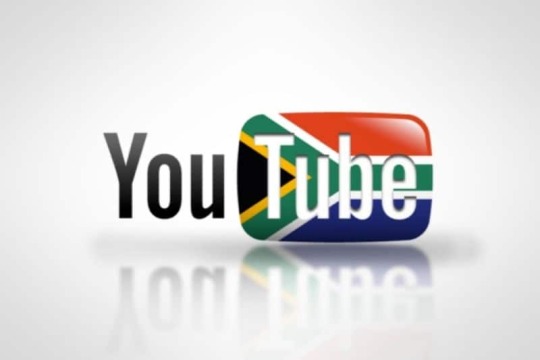
View On WordPress
#adventure sports#advertising revenue#affiliate marketing#Afrikaans#Audience engagement#Audience Targeting#censorship#Channel Growth#community growth#content creation#cpm rates#cultural insights#digital marketing#e-commerce#education#entrepreneurship#equipment#heritage#international competition#internet accessibility#local content#local languages#local tourism#monetization#niche markets#online business#online viewership#purchasing power#regulation#social issues
0 notes
Text
#Sports Fishing Equipment Market#Sports Fishing Equipment#Sports Fishing Equipment Market size#Sports Fishing Equipment Market share#Sports Fishing Equipment Market trends
0 notes
Text
#INDUSTRIES#3E-Sports#3E-Broadcasting#3E-Sports Merchandising#3E-Sports Equipment#3E-Marketing#3E-Social Media#3E-Ticketing#3E-Fan Engagement#3E-Advertising.#VALUES#3E-Respect#3E-Dignity#3E-Equality#3E-Inclusiveness#3E-Honesty#3E-Integrity#3E-Accountability#3E-Compassion#3E-Fairness#3E-Cooperation.#TRAITS#3E-Optimism#3E-Enthusiasm#3E-Empowerment#3E-Encouragement#3E-Inclusivity#3E-Progressiveness#3E-Positivity#3E-Flexibility
0 notes
Text
Unveiling the Key Players in the Indian Sports Equipment Market
The Indian sports equipment market is a vibrant arena teeming with established giants, innovative challengers, and a passionate consumer base. From cricket bats to badminton rackets, this market equips millions of Indians to pursue their sporting dreams. But who are the major players behind the scenes, supplying the equipment that fuels this national obsession with sports? Let's delve into the team sheet and meet some of the key market participants:
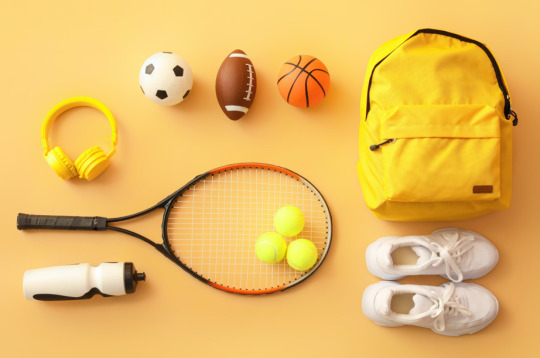
Dominant Domestic Players:
Cosco (India) Limited: An undisputed leader, Cosco offers a wide range of sports equipment across various categories, with a strong presence in cricket, football, and fitness gear.
Nivia Sports (Freewill Sports Pvt. Ltd.): This iconic Indian brand is synonymous with cricket, offering high-quality bats, balls, and other cricket-specific equipment.
Sareen Sports Industries Private Limited: A prominent player known for cricket bats, hockey sticks, and equipment for traditional Indian sports like kabaddi.
Sanspareils Greenland Private Limited: This established brand caters to cricket enthusiasts with a diverse range of bats, balls, and protective gear.
Global Powerhouses:
Adidas, Nike, Puma: These international giants offer a comprehensive selection of sports apparel and footwear, with some forays into equipment for specific sports like football or running.
Decathlon: This French sporting goods giant has entered the Indian market with a focus on providing high-quality, affordable equipment across various sports.
Emerging Challengers:
Direct-to-Consumer Brands: Several online-first brands are disrupting the market by offering innovative, design-focused sports equipment at competitive prices.
Sports-Specific Brands: Companies specializing in specific sports, like badminton or tennis, are emerging and catering to niche segments of the market.
Beyond the Big Names:
Unorganized Sector: A significant portion of the market is still dominated by unorganized retailers and local manufacturers, offering budget-friendly equipment.
Choosing Your Team: Factors to Consider
With such a diverse range of players, choosing the right sports equipment can be overwhelming. Here are some key factors to consider:
Brand Reputation: Consider the brand's history, quality standards, and customer reviews.
Sport-Specific Needs: Choose equipment designed for your specific sport and playing level.
Price and Budget: Set a realistic budget and find equipment that offers good value for money.
Availability and Distribution: Look for brands with easy accessibility through online or local retailers.
The Future of the Team: Collaborations and Innovation
The Indian sports equipment market can reach new heights by fostering collaboration between established players and innovative newcomers. Additionally, a focus on:
Domestic manufacturing: Reducing import dependence and creating a self-sufficient ecosystem.
Technological advancements: Developing equipment that integrates technology for enhanced performance or training.
Sustainability: Using eco-friendly materials and promoting responsible manufacturing practices.
Playing to Win: A Team Effort
The Indian sports equipment market is a team effort, with players, manufacturers, retailers, and consumers all working together. By understanding the key players in this dynamic market, you can make informed choices about the equipment you use. As the market evolves, expect to see exciting new players emerge, innovative products hit the shelves, and India take its rightful place as a global force in the world of sports equipment.
#Indian sports equipment market#sports equipment market#market research#researchreports#sports industry
0 notes
Text
0 notes
Text
Sports equipment are utility devices or tools useful for engaging in sports activities. Similarly, sports apparel is useful for boosting the sports performance with required comfort. However, consumers are actively wearing sports apparel during non-sports hours
0 notes
Text
United States Sports Equipment and Apparel Market Share, Forecast 2023-2029
BlueWeave Consulting, a leading strategic consulting and market research firm, in its recent study, estimated United States sports equipment and apparel market size at USD 117.45 billion in 2022. During the forecast period between 2023 and 2029, BlueWeave expects United States sports equipment and apparel market size to grow at a CAGR of 8.3% reaching a value of USD 203.72 billion by 2029. People's increasing involvement in sports and leisure activities is one of the main factors fueling the expansion of the United States for sports equipment and apparel market. Growing stress management, rising health awareness, sedentary lifestyles, and the younger generation's openness to rapidly evolving trends are some of the elements that have an impact on market growth. The availability of sports apparel with improved features like moisture management, temperature control, and other performance-boosting qualities that prevent discomfort and potential injury has piqued consumers' interest, and it has been observed that these consumers are willing to pay a premium for these products. During the forecast period, the sports equipment market is expected to experience profitable growth opportunities due to rising disposable income, rising living standards, and rapid urbanization across numerous regions.
United States Sports Equipment and Apparel Market – Overview
Sports equipment or sporting goods, which include sports clothing, tools, gear, and materials, are frequently used to compete in sports or keep in shape. It is also employed to protect a person from harm while they engage in sports. The market is expected to grow as a result of young people adopting more cutting-edge sports technologies and fashion trends.
Sample Request @ https://www.blueweaveconsulting.com/report/united-states-sports-equipment-and-apparel-market/report-sample
Growth Drivers
Increasing emphasis on fitness and sports
Sports education and training in educational institutions have significantly increased the emphasis on sports and fitness. As a result, many educational institutions provide training to scholars, allowing them to compete in various sports competitions. An increase in the number state, national, and international level competitions result in increased youth participation and interest in sports activities. It spurs the demand for sports equipment and apparels. This, in turn, is projected to fuel the growth of United States sports and apparel market during the period in analysis.
Challenge: Increasing consumer propensity for other leisure activities
Consumer propensity for leisure pursuits other than sports, such as movie watching, video gaming, and music festivals, is increasing. Sporting goods are also expensive and out of reach for many people. Few manufacturers may increase the weight of the equipment to increase the level of protection while playing the game, which may make the player uncomfortable. These unfavorable trends are anticipated to limit the growth of United States sports equipment and apparel market.
Impact of COVID-19 on United States Sports Equipment and Apparel Market
The country-wide lockdown and restrictions have caused a significant decline in the market for sports apparel and equipment in the United States. The manufacturing and supply chain operations were suspended for a while to help slow the virus's spread. Like other public spaces, gyms and health and fitness centers were closed for months to avoid crowding. Sportswear became less popular as people spent more time inside their homes, and everyday active wear gained popularity. International sporting competitions, such as the Wimbledon Tennis Championship, MotoGP World Championship, Euro 2020 Football Championship, Summer Olympics of 2020, World Athletics Indoor Championships of 2020, and Formula One were either postponed or canceled as a result of the pandemic. Consequently, sports equipment and apparel market suffered significant loss during the pandemic period. In Post pandemic, however, national and global sports events and people’s increasing focus on health and fitness are expected to drive the demand for sports equipment and apparels in the United States.
United States Sports Equipment and Apparel Market – By Sports Type
The United States sports equipment and apparel market is classified as Bike, Outdoor, Tennis, Running, Fitness Equipment, Football/Soccer, Winter Sports, Watersports, and other segments. The football/soccer segment dominated the sports equipment market. Basketball, soccer, and football are among the most popular ball sports among children and their parents across the country. This is one of the primary factors driving the expansion of the market for sports equipment and accessories. The massive number of athletic competitions and participatory tournaments hosted by schools across the United States is thought to be driving up demand for sports equipment and apparel.
Competitive Landscape
United States sports equipment and apparel market is fiercely competitive. Prominent companies in the market include Adidas AG, Academy Sports + Outdoors, Amer Sports, Asics, Bass Pro Shops, Callaway Golf Company, Decathlon, Dick’s Sporting Goods, Escalade Inc., Fanatics, Inc., Fila Holdings Corp., Frasers Group plc, GAP INC., Gray-Nicolls, Gunn & Moore, Kappa, Lululemon Athletica, and Mizuno Corporation. These companies use various strategies, including increasing investments in their R&D activities, mergers, and acquisitions, joint ventures, collaborations, licensing agreements, and new product and service releases to further strengthen their position in United States sports equipment and apparel market.
Contact Us:
BlueWeave Research Blog
Phone No: +1 866 658 6826
Email: [email protected]
0 notes
Text
Rising Health Awareness And Fitness Is One Of The Primary Factors Driving Sports Equipment Market
The global sports equipment market size is expected to reach USD 578.9 billion by 2030, according to a new report by Grand View Research, Inc. The market is expected to expand at a CAGR of 6.4% from 2022 to 2030. Rising awareness regarding general health and fitness is one of the primary factors driving the market. Also, constant improvements in materials used for manufacturing of sports equipment are helping enhance product performance, thereby boosting the adoption rate. For instance, with advancements in sensor technologies, consumers are increasingly demanding equipment that can provide them with relevant insights into performance. Moreover, various research and development programs have been introduced by manufacturers to improve quality of sports equipment.
Nowadays, carbon fiber is increasingly used in manufacturing sports equipment, which is projected to positively influence the growth of the market over the forecast period. Additionally, the sensor technology has evolved to an extent that it can be incorporated into a multitude of sports equipment such as golf clubs, fishing rods, tennis rackets, and swimming goggles which will augment the growth of the market.
Gain deeper insights on the market and receive your free copy with TOC now @: Sports Equipment Market Report
The fitness/strength equipment segment is anticipated to grow at a fast pace. Majority of urban population has begun to adopt healthier eating habits and taking up regular physical exercise in order to stay fit. Increasing awareness regarding accepting healthy lifestyles that involves optimal physical exercise inspires consumers to purchase and indulge in fitness/strength activities, which is expected to contribute to the demand for this segment over the forecast period.
The online retail segment is expected to register the fastest CAGR from the year 2022 to 2030. Online retail sales are expected to witness substantial gains in the coming years on account of rising consumer spending, increasing usage of smartphones, rising penetration of internet to browse and shop online for products (including sports equipment). The market is consolidated in nature with the presence of a large number of international players and regional players.
#Sports Equipment Market Size & Share#Sports Equipment Market Latest Trends#Sports Equipment Market Growth Forecast#Sports Equipment Industry Insights#COVID-19 Impacts On Sports Equipment Market#Global Sports Equipment Market
1 note
·
View note